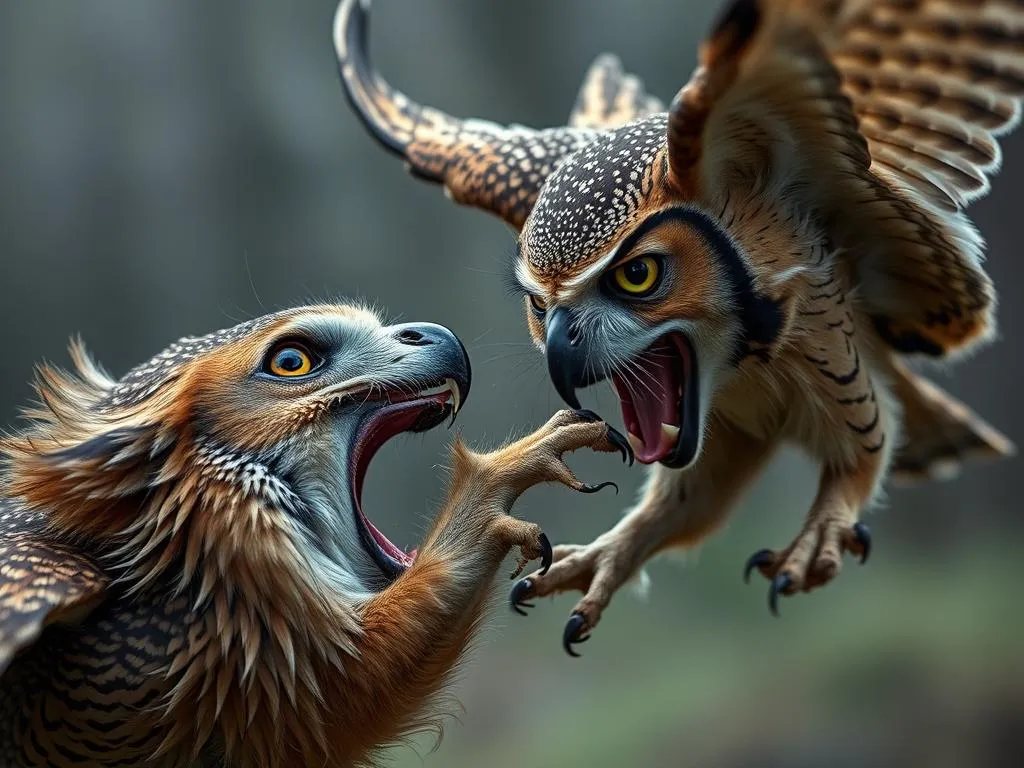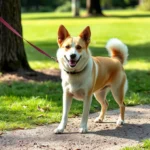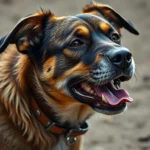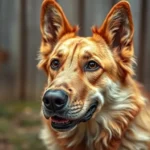
Owls are fascinating creatures, often shrouded in mystery and myth. Their nocturnal nature and silent flight make them the stuff of legends, while their unique appearance captures the hearts of many. However, as pet owners, it’s essential to understand how these birds of prey interact with our furry friends, particularly dogs. In this article, we will explore whether owls attack dogs, the factors influencing such encounters, and what pet owners can do to keep their dogs safe.
Understanding Owls
Owl Species
Owls belong to the order Strigiformes, and there are over 200 species worldwide. Some of the most common species include:
- Great Horned Owl: Known for its tufted “horns” and large size, this owl is highly adaptable and can be found across North America.
- Barn Owl: With its distinctive heart-shaped face, the Barn Owl prefers open habitats and is often found in rural areas.
- Eastern Screech Owl: A small but fierce nocturnal predator, the Eastern Screech Owl is often found in wooded areas throughout the eastern United States.
These species inhabit various environments, from forests and grasslands to urban areas. Understanding their habitats and behaviors is crucial in assessing the risk they pose to dogs.
Owl Behavior and Diet
Owls are primarily nocturnal, meaning they are most active at night. They have exceptional night vision and acute hearing, which aids in hunting. Owls primarily feed on small mammals, birds, and insects, using their sharp talons and beaks to catch and consume prey. Their hunting habits are typically dictated by their size and species, with larger owls like the Great Horned Owl capable of taking down larger prey.
The nocturnal nature of owls means that they often interact with other animals, including dogs, during evening and nighttime hours. Understanding these behaviors can help pet owners identify potential risks.
Do Owls Attack Dogs?
Factors Influencing Owl Behavior
Several factors determine whether an owl might perceive a dog as a potential threat or prey:
-
Size of the Dog: Smaller dogs, particularly those under 20 pounds, are generally at greater risk during owl encounters. Larger dogs are less likely to be targeted but can still provoke a defensive reaction if they invade an owl’s territory.
-
Time of Day: Dogs let out during dawn or dusk may inadvertently cross paths with hunting owls. It’s essential to be cautious during these twilight hours when owls are most active.
-
Owl’s Hunting Instincts and Territorial Behavior: Owls are territorial creatures who may defend their nesting areas from perceived threats. If a dog wanders too close to an owl’s nest, it could provoke an attack.
Documented Incidents
While documented incidents of owls attacking dogs are relatively rare, they do occur. Reports often detail smaller dogs being swooped down upon by larger owls. For example, a small terrier being attacked by a Great Horned Owl while playing in a backyard. These incidents typically happen when the dog is left unsupervised near areas with known owl populations.
The circumstances leading to these incidents often involve the dog being too close to the owl’s nesting site or engaging in behavior that attracts the owl’s attention, such as barking or running erratically.
Myths and Misconceptions
Numerous myths surround owls and their behavior towards dogs. One common belief is that all owls are aggressive and will attack any dog they encounter. In reality, while owls can be protective of their young and territorial, they are not inherently aggressive towards dogs. They typically prefer to avoid confrontations unless they feel threatened.
Another misconception is that owl attacks are frequent and widespread. In truth, while there are occasional incidents, the majority of owl species do not pose a significant threat to dogs when appropriate precautions are taken.
Risks to Dogs from Owls
Potential Threats
Owls can pose several risks to dogs, particularly smaller breeds:
-
Physical Harm: If an owl perceives a dog as a threat or prey, it can inflict injuries using its sharp talons and beak. This can lead to serious wounds that could require veterinary attention.
-
Psychological Impact: Beyond physical harm, encounters with owls can lead to fear and anxiety in dogs. Even a near miss can create a lasting fear of the outdoors, affecting the dog’s behavior during walks.
Signs of an Owl Encounter
Pet owners should be aware of behavioral changes in their dogs that may indicate an encounter with an owl:
-
Increased Anxiety: Dogs may exhibit signs of anxiety, such as pacing, whining, or refusing to go outside after an encounter with an owl.
-
Physical Signs of Attack or Injury: If a dog has been attacked, signs may include visible wounds, limping, or excessive licking of a particular area. Immediate veterinary care is essential in such cases.
Preventative Measures for Dog Owners
Awareness of Surroundings
As a responsible dog owner, being aware of your surroundings is crucial, especially during evening walks. Familiarize yourself with areas known for high owl activity, such as wooded parks or open fields. Recognizing potential nesting areas can help you keep your dog safe.
Safety Tips
-
Keeping Dogs Leashed: Always keep your dog on a leash during walks, especially in areas known for owl populations. This gives you better control over your dog’s movements and keeps them close to you.
-
Avoiding High Owl Activity Areas: If you know specific locations where owls are frequently observed, it’s best to avoid these areas during their active hours.
Training and Behavior Modification
Training can play a critical role in ensuring your dog remains safe around wildlife:
-
Desensitization Training: Gradually exposing your dog to various sounds, including hooting, can help them become accustomed to the presence of owls without becoming overly fearful.
-
Behavioral Changes: Teaching your dog commands such as “leave it” or “come” can be invaluable in redirecting their attention if they spot an owl or other wildlife.
What to Do if an Owl Attacks your Dog
Immediate Actions
If an owl attacks your dog, your first step is to assess the situation:
-
Stay Calm: Your reaction can influence your dog’s behavior. Stay calm and try to safely retrieve your dog if possible.
-
First Aid Measures: If your dog is injured, apply basic first aid. Control bleeding with a clean cloth and avoid touching any wounds directly. Take your dog to the veterinarian as soon as possible.
Reporting and Further Actions
In the unfortunate event of an owl attack, it’s essential to report the incident:
-
Contact Wildlife Authorities: Report any aggressive owl behavior to local wildlife authorities. They can monitor the area for increased activity and provide guidance on safety measures.
-
Legal Implications: Depending on your location, certain laws protect owls and other wildlife. Understanding your local regulations can help you navigate any legal implications following an attack.
Conclusion
Understanding the dynamics between owls and dogs is essential for responsible pet ownership. While it is relatively rare for owls to attack dogs, the potential risks do exist, particularly for smaller breeds. By being vigilant, training your dogs, and taking preventative measures, you can significantly mitigate the risks associated with these majestic birds.
In the end, fostering a respectful coexistence between owls and our canine companions is vital. Both species play unique roles in the ecosystem, and with the right knowledge and precautions, pet owners can enjoy the beauty of wildlife without unnecessary concern.









